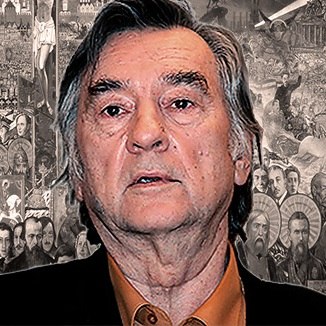Berlin was recently full of posters and billboards announcing a Russian cultural festival, “Wie klingt Russland?” (“How does Russia sound?”), featuring a young lady with her ear to the top half of a Russian matrioshka, the universal signifier of “official” Russian identity.
In the meantime, a different Russia was introduced to Germany, less traditional and more sarcastic. The exposition "Verbotene Kunst" (“Forbidden Art”) presented the cartoonist Viktoria Lomasko, who in her paintings reflects the repressive atmosphere of Putin’s Russia, where artists can be prosecuted and jailed. The Pussy Riot affair is obviously one target of the cartoons; another is the trial against the organizers of the “Caution, Religion!” exhibit held in Moscow a few years ago. Viktoria Lomasko is part of a network of art performers that includes Anton Nikolaev, Andrey Erofeev, and Yurii Samodurov, as well as the “Bombila” and “Voina” groups. The latter was introduced to German viewers a year ago in the movie "Zavtra" ("Tomorrow") which tells a story of resistance to the regime by means of public performances (such as, for example, turning police cars upside down and posting the shots on the internet).
Evidently, all such performances are explicitly political, whether they let out dozens of roaches into a courtroom (an allusion to prosecutors’ insanity) or stage a flogging at the doors of the district court in Moscow which sentenced Pussy Riot. At the presentation of her cartoon book published recently in Germany Viktoria Lomasko described the neurotic reaction to her pictures from the Narodny Sobor and Union of Orthodox Citizens – “their zealots not only proposed to beat me and confiscate the drawings, but also directly threatened me, predicting a tragic end.”
Lomasko and Nikolaev, speaking to the German audience, defined themselves as anti-fascists. It is religious fanaticism and the radical denial of liberal freedoms that their cartoons denounce. The wording in their drawings is not imaginary – all phrases were taken from the trial against the “Caution, Religion!” exposition. “What is the purpose of your art?” (a question from the judge); “In tsarist Russia they would get capital punishment”; “We shall remove all the scum from Russia; “Should I be a bit braver, I would execute Gaydar… and ban TV commercials” (remarks from a group of Orthodox believers). Isn’t all this a perfect testimony of the unhealthy spirit of today’s Russia – a country where the most parochial stereotypes and attitudes again arise in public discourses supported by the ruling elite?
The most striking thing is that some deem Lomasko’s cartoons not sufficiently radical. The presentation seminar in Berlin was interrupted by an angry voice from the audience: “We do know that the Church and the state are intimately interwoven in Russia. What we don’t understand is why the German government is so tolerant to Putin’s regime?” It seems that it becomes a tradition to hear such stark remarks at public events in Berlin. Art, after all, is about politics.
Andrey Makarychev is a Guest Professor at the Free University of Berlin, blogging for PONARS Eurasia on the Russia-EU neighborhood.











